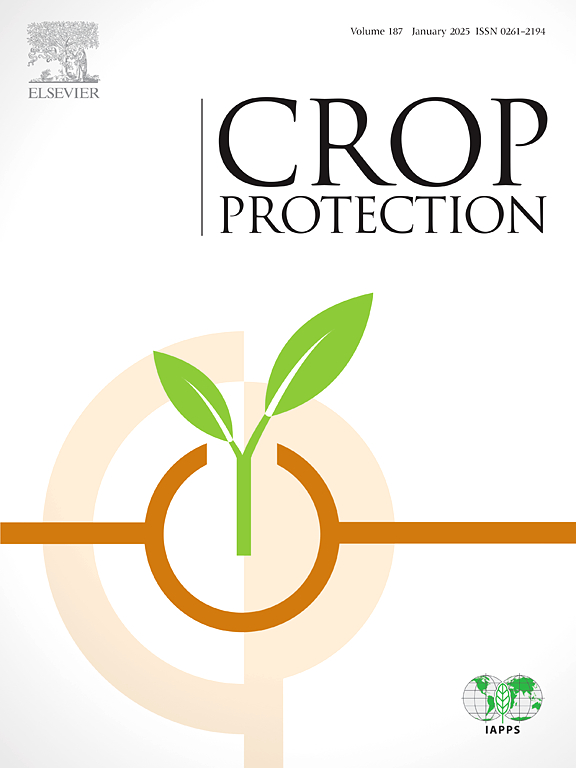A sustainable biocontrol approach using rhizosphere bacterial strains against Meloidogyne javanica on tomato
IF 2.5
2区 农林科学
Q1 AGRONOMY
引用次数: 0
Abstract
The root-knot nematode (RKN), Meloidogyne javanica, causes severe damage to a wide variety of crops. These nematodes significantly reduce tomato yield globally, causing symptoms such as stunted growth, galls on roots, chlorosis, and wilting, ultimately leading to host death. Classical nematode control methods, such as the application of chemical nematicides, are very effective; however, their use is limited due to conflicts with sustainable agriculture. Therefore, biological methods, are gaining attention as more environmentally friendly options. In the present study, 47 strains of bacteria were isolated from the rhizosphere of RKN-infected plants. The effect of these strains was studied on egg hatching and second stage infective juveniles (J2s) mortality of M. javanica, in vitro. Then, three holes were made in the soil around the roots of non-inoculated and nematode inoculated tomato plants and a suspension of 15 mL of three isolates with the greatest negative effect on hatching and J2s mortality (107 CFU/ml), was poured into the holes. Stenotrophomonas maltophilia CPHE1, Peribacillus frigoritolerans Rhs-L31 and Bacillus cereus Pt0-RL12 improved the vegetative indices of inoculated plants compared to control plants. These strains significantly reduced nematode hatching and significantly increased mortality of nematode J2s; and in greenhouse pot experiments significantly reduced the number of nematode eggs and egg masses, root galls, and nematode reproduction factor. In each case, inoculation with the bacterial strains significantly increased peroxidase and superoxide dismutase activity, and decreased catalase activity in tomato roots infected with M. javanica. The present study indicates the potential of these bacterial strains for biocontrol of M. javanica on tomato.
求助全文
约1分钟内获得全文
求助全文
来源期刊

Crop Protection
农林科学-农艺学
CiteScore
6.10
自引率
3.60%
发文量
200
审稿时长
29 days
期刊介绍:
The Editors of Crop Protection especially welcome papers describing an interdisciplinary approach showing how different control strategies can be integrated into practical pest management programs, covering high and low input agricultural systems worldwide. Crop Protection particularly emphasizes the practical aspects of control in the field and for protected crops, and includes work which may lead in the near future to more effective control. The journal does not duplicate the many existing excellent biological science journals, which deal mainly with the more fundamental aspects of plant pathology, applied zoology and weed science. Crop Protection covers all practical aspects of pest, disease and weed control, including the following topics:
-Abiotic damage-
Agronomic control methods-
Assessment of pest and disease damage-
Molecular methods for the detection and assessment of pests and diseases-
Biological control-
Biorational pesticides-
Control of animal pests of world crops-
Control of diseases of crop plants caused by microorganisms-
Control of weeds and integrated management-
Economic considerations-
Effects of plant growth regulators-
Environmental benefits of reduced pesticide use-
Environmental effects of pesticides-
Epidemiology of pests and diseases in relation to control-
GM Crops, and genetic engineering applications-
Importance and control of postharvest crop losses-
Integrated control-
Interrelationships and compatibility among different control strategies-
Invasive species as they relate to implications for crop protection-
Pesticide application methods-
Pest management-
Phytobiomes for pest and disease control-
Resistance management-
Sampling and monitoring schemes for diseases, nematodes, pests and weeds.
 求助内容:
求助内容: 应助结果提醒方式:
应助结果提醒方式:


